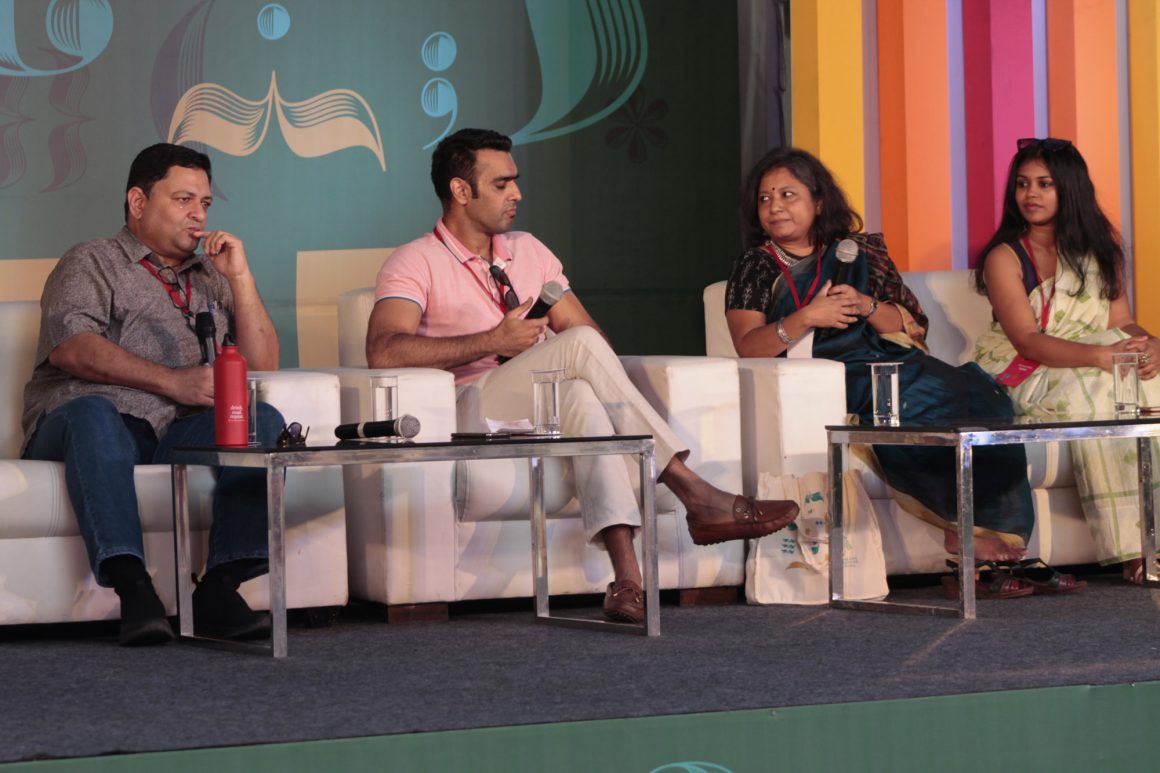How many times do we see characters from the tribal community of the far flung areas of India, particularly in English mainstream publishing? Well, breaking the notion, HarperCollins have published two novella called Bhaunri and Daura written by Anukrti Upadhyay.
In her conversation with Udayan Mitra, a literary publisher at HarperCollins Publishers India, Anukrti who is a lawyer turned writer, talked about her process of writing the two novellas set in rural Rajasthan. Reading Daura reminded Udayan of the book Heart of Darkness by Joseph Conrad, which is a story of village through the journal of a district collector who starts getting deeply involved in the lives of rural people.
Both stories revolve around the theme of love. Bhaunri, a girl from the blacksmith tribe of rural rajasthan is married at a very young age and when she goes to stay with her husband as a young adult, she experiences an inclination towards another man. As Anukrti read an excerpt from the book Bhaunri, one could easily immerse in the narrative and detailing of the characters so profound. Udayan exclaims that her stories are redolent of sight, smell, and feel of Rajasthan.
Anukrti said that being born and brought up in Jaipur, nomads were a frequent sight and though she didn’t live in the desert, it always fascinated her, which were the inspiration behind the books.
When asked why she writes both in English and Hindi she admits that even though she is fluent in both, it is to compensate the inadequacy she falls in when writing in one of the languages. She further explained that there are certain expressions and words that are best expressed in a particular language and translation cannot do justice though she tries her best to keep the soul and rhythm intact if at all a translation is required.
The book that Anukrti has written in Hindi is a collection of short stories called Japani Sarai. For her love of the culture and aesthetics of Japan, Anukrti also talked about her upcoming book Kinsuki which has a cultural mix of both Rajasthan and Japan. For her, places are as important as characters in the story.
The session ended with a question about her past life where she was a lawyer working in global investment companies – what lead her to shift towards writing? She answered that she had been writing ever since a child and is addicted to it, though she shifted from poetry writing to prose when it came to formal publishing. It was just a gradual shift from writing a journal for herself to writing for everyone but writing had always been her love.
About the Author: Bhumika Soni is a literature enthusiast working in the field of data analytics, I have always found words more charming and powerful than numbers. Still searching for The Enchanted Tree created by Enid Blyton to travel to various magical worlds. She currently writes for TheSeer.

